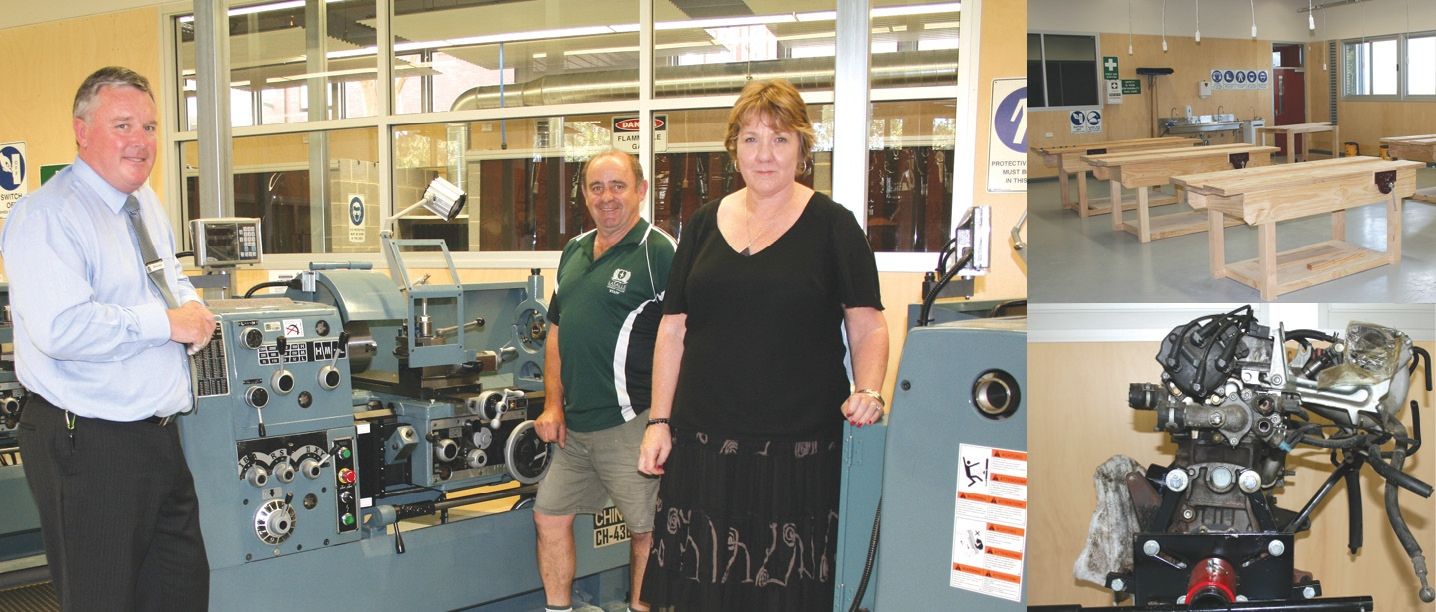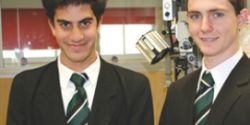For VET teachers fed up with juggling conflicting schedules, additional assessments and the relentless tangle of red tape, the approach being taken with a new trade training centre at La Salle Bankstown may make better sense.
New roads to vocational success

The Saint Yon Trade Training Centre, which opened its doors to students for the first time last year, has been established by a cluster of five schools, LaSalle Catholic College at Bankstown, Casimir Catholic College Marrickville, De LaSalle Catholic College Revesby, Holy Spirit College Lakemba and Trinity Catholic College Auburn.
Offering courses in Construction, Electrotechnology, Automotive and Metals and Engineering, LaSalle Catholic College Principal Michael Egan says the Centre was built in Bankstown because it was the largest of the schools and had the best transport corridors.
In 2013 the centre catered for 62 students from nine schools and this year 170 Year 10-12 students from 16 schools will attend, including 20 with identified special needs. There are also a growing number of school-based apprentices.
Michael says the structure of the Trade Training Centre is enabling the cluster to “meet the needs of students in ways we have not met their needs before”. At $7million – including $5million from the Federal Government - he says the approach has required “a big injection of capital but also real commitment to take forward”.
“If we’re going to have students staying in schools until this age, then we need to have the courses and the people trained to deliver them in a safe and meaningful way,” Michael says. “This way, they are going to come out of it not just with a qualification but also useful and employable at the end of it all.”
In 2013 the centre opened with five TAFE teachers but dropped back to four by the end of the year. This year the program will be taught by 10 TAFE teachers. There are four LaSalle staff members employed and none teach in other parts of the school.
Eventually more teachers will be placed on staff for the Trade Training Centre, and they don’t expect to have trouble finding candidates.
“There are plenty of people out there looking for work who have the background for it. Many of our schools already do Construction and we’d have a number of people already familiar with all the equipment who would also relish the opportunity to have a totally indoor environment like we’ve got here.”
Once on staff, Michael says these teachers will not be required to run between regular classes to teach VET subjects, nor will they be faced with afternoon VET classes following a full teaching day.
“That doesn’t happen here - no way,” he says. “No one would do it. It’s not sustainable.”
He says one of the benefits of a dedicated centre is having a group of people in the VET area working together.
“In contrast, for many schools those working in VET are a minority on staff and the issues that concern them are not always at the forefront of thinking in the overall planning for the school,” he says.
This year the trade floors will operate from 1.30pm to 5.30pm every afternoon, with IT, Business Services and Hospitality also placed on the Trade Training Centre timetable instead of the school timetable. English and Maths and Work Studies classrooms will run in the mornings.
LaSalle Teacher and IEU member Debra Kay is passionate about the opportunities and experiences the Trade Training Centre provides. She says it is time VET got better recognition.
“VET needs to get the recognition it deserves as an academic and vocational pathway that some of the other subjects such as Economics and Physics have traditionally got,” she says. “We all have different skills and gifts.”
Debra says there are pathways to university by doing subjects such as electronics, or metals and engineering.
“You can get on the pathway to your trade and also get success if you want an ATAR by doing these subjects.”
The centre’s vocational education courses are dual accredited to meet National Standards and the HSC, with ATAR and non-ATAR options. Students can train towards Certificate II and Certificate III credentials, with apprentices completing the training for the first year of their apprenticeship.
Regarding compliance and the notoriously tough national vocational training regulator ASQA, La Salle Teacher and IEU member Kevin Barrett says the schools already expect to be “looked at with fine tooth comb and that’s what we’re preparing for”.
He says challenges have less to do with compliance and more to do with the scope of the courses. For instance, the level of delivery for the metals training package has changed a number of times in the past year.
“In terms of delivery, you need some surety about what the course is going to be for even a small period of time,” Kevin says. “But at the moment, with some of the frameworks it’s only three months between one set and the other.
“People have to reprogram because the specs change. More often than not it’s simplifying the courses and lessening the qualifications. Every time they change it you’ve got to look at the whole scope of delivery again.”
Michael says another challenge may be getting acknowledgement for kids’ attainment of skills as opposed to numbers from an exam.
“In schools the benchmark for a long time has simply been HSC marks, whereas for a lot of the kids attracted to this style of learning it’s not about a number. It’s about a skill.
“Hats off to the system for trying to go about things in new ways – and the Government for putting up the funding initially.”

Anthony: I’m doing automotive and metal is my second. I wanted to do automotive because I’ve been doing it since I was young, helping my Dad every time he fixed his truck or the car. It’s great here. It’s a nice place with all the latest equipment. I split my week, working Thursdays and Fridays and I learn lots of stuff there. I want to get into diesel mechanics and work on trucks for a big company.



































































































































